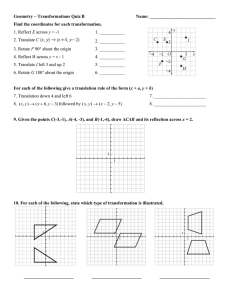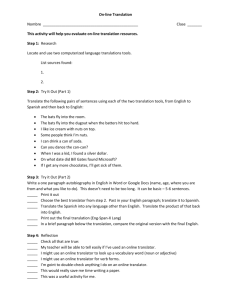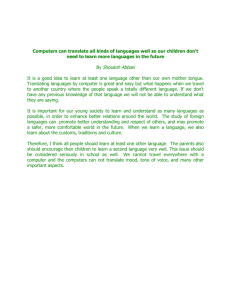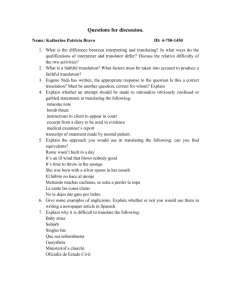Question for Discussion – 717 - 51 Id. No. 4
advertisement
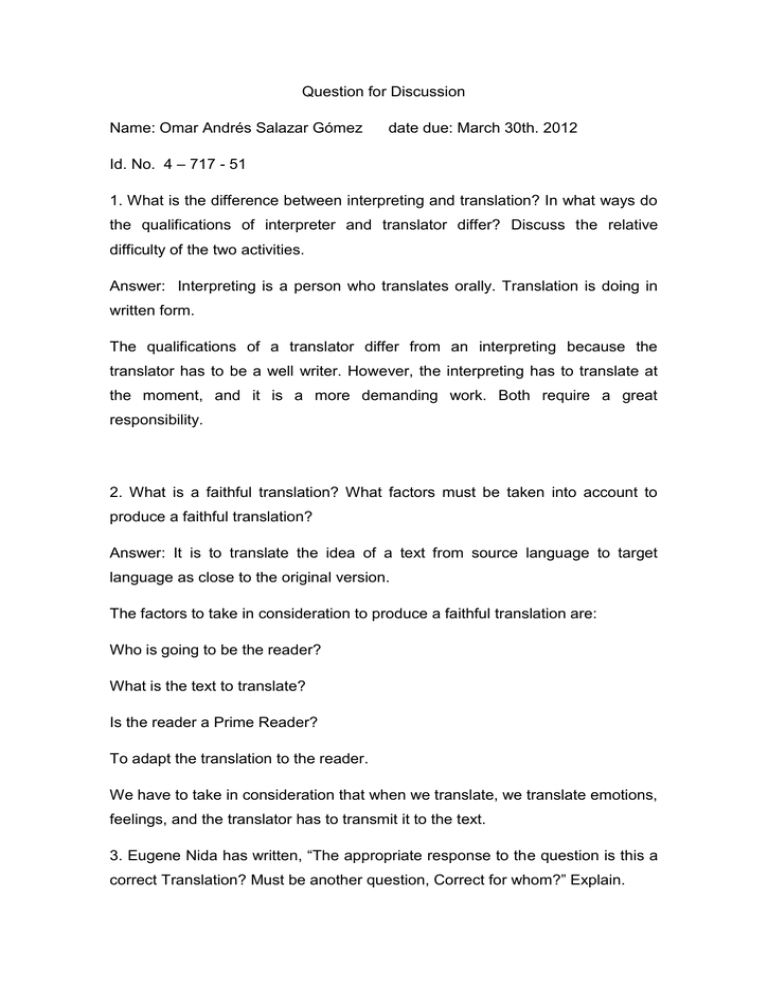
Question for Discussion Name: Omar Andrés Salazar Gómez date due: March 30th. 2012 Id. No. 4 – 717 - 51 1. What is the difference between interpreting and translation? In what ways do the qualifications of interpreter and translator differ? Discuss the relative difficulty of the two activities. Answer: Interpreting is a person who translates orally. Translation is doing in written form. The qualifications of a translator differ from an interpreting because the translator has to be a well writer. However, the interpreting has to translate at the moment, and it is a more demanding work. Both require a great responsibility. 2. What is a faithful translation? What factors must be taken into account to produce a faithful translation? Answer: It is to translate the idea of a text from source language to target language as close to the original version. The factors to take in consideration to produce a faithful translation are: Who is going to be the reader? What is the text to translate? Is the reader a Prime Reader? To adapt the translation to the reader. We have to take in consideration that when we translate, we translate emotions, feelings, and the translator has to transmit it to the text. 3. Eugene Nida has written, “The appropriate response to the question is this a correct Translation? Must be another question, Correct for whom?” Explain. Answer: The translation must be correct for the reader. The reader is the person who is going to receive and use the translation. For that reason is important to know first: Who is the reader? And the Text we are going to translate. 4. Explain whether an attempt should be made to rationalize obviously confused or garbled statements in translating the following: Ransom note Bomb threat Instructions to client to appear in court Excerpt from a diary to be used in evidence Medical examiner´s report Transcript of statement made by mental patient. Answer: All these examples are extremely situations that deserve to be translating with the same meaning from source language to target language. The aspect and meaning of the message has to arrive at the reader without any obstacle or misunderstanding, in natural way. Style and tone are very important in these cases. 5. Explain the approach you would use in translating the following: Can you find equivalents? Rome wasn´t built in a day= el mundo no se hizo en un día. It´s an ill wind that blows nobody good.= No hay mal que por bien no venga. It´s time to throw in the sponge= Tirar la toalla. She was born with silver spoon in her mouth.= Nació en cuna de oro. El hábito no hace al monje.= The suit doesn´t make the man. Metiendo muchas cucharas, se echa a perder la sopa. Le canté las cosas raras. No te dejes dar gato por liebre. Answer: In this cases we can find equivalents but in set phrases. All the examples are sayings, and we can translate that to the target language using sayings. 6. Give some examples of Anglicism. Explain whether or not you would use them in writing a newspaper article in Spanish. Answer: some examples of Anglicism are: Hot dog – football – hobby – sandwich- waffles – mall – software- mouse. I would use it if there is not an equivalent in Spanish. 7. Explain why it is difficult to translate the following: Baby sister Suburb Single´s bar ¡Que sea enhorabuena! Guayabera Minister (of church) Oficialía de Estado Civil Answer: It is difficult to translate these concepts because in Spanish exist regional differences. What “baby sister” means in North American is not the same that “domestica” in Panama. The concept that the person has is different in our country.
